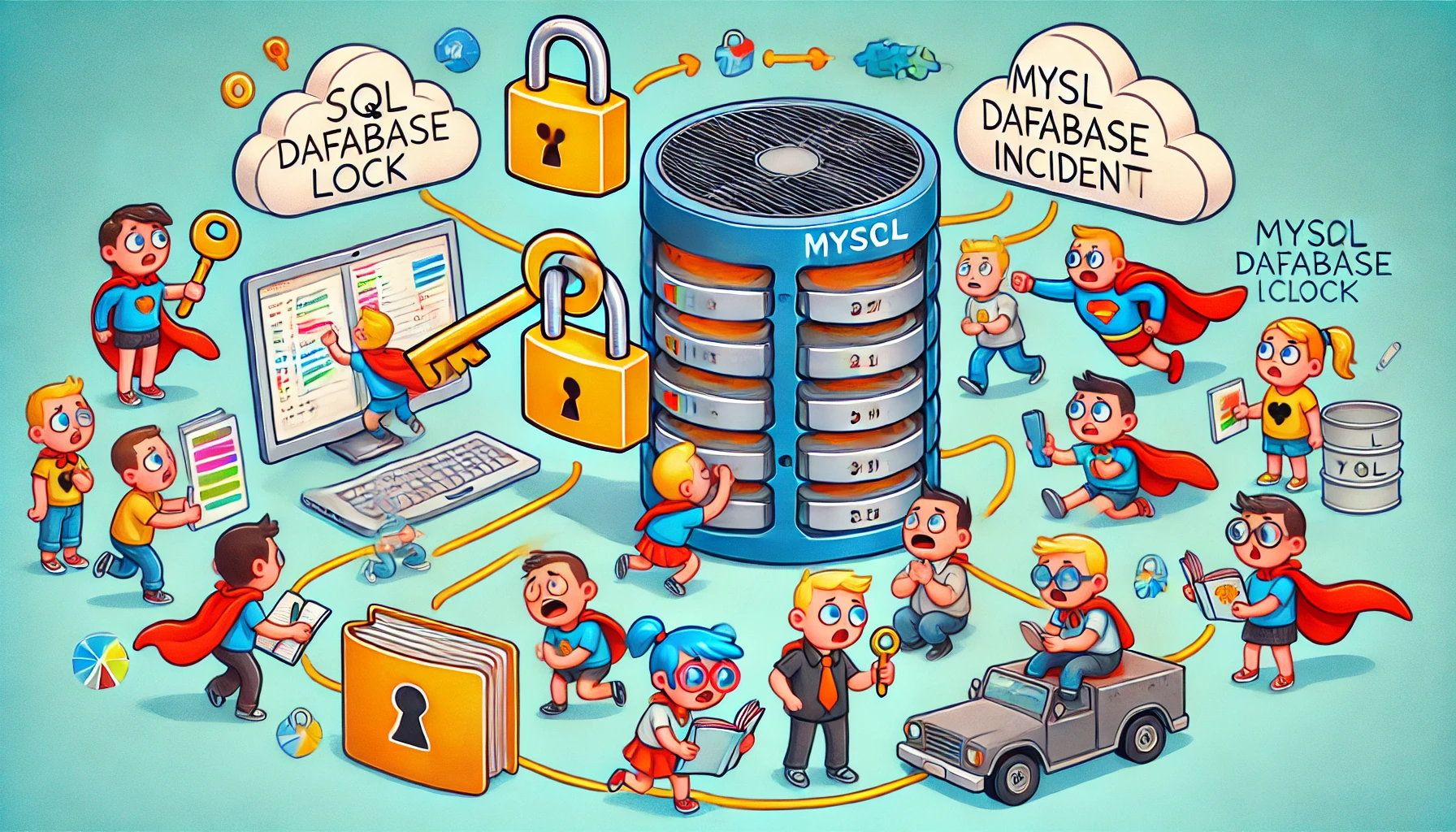Resolving MySQL Database Lock Issues: An Expert Post-Mortem 🛠️
 Berthran Daniel
Berthran Daniel
PS: This is an imaginary post-mortem on the Notable application. We've used humor and storytelling to craft an engaging narrative following a database lock.
Issue Summary 📅
Duration:
July 18, 2024, 2:00 PM - 4:30 PM (GMT)
Impact:
For a little over two hours, Notable went from "notable" to "not available." Users couldn't access their notes or create new ones, and it wasn't pretty—like losing your grocery list right before shopping. About 80% of our users were affected, resulting in widespread confusion and a sudden surge in sticky note sales.
Root Cause:
The culprit? A MySQL database lock that decided to cling on tighter than a cat to a laser pointer. This lock caused a bottleneck in our database, freezing everything in its tracks.
Timeline of Events ⏳
2:00 PM: A monitoring alert went off. It was the digital equivalent of a loud crash in the middle of the night. Something was wrong.
2:05 PM: An engineer noticed that Notable was slow—really slow. Like "waiting for your coffee to brew" slow. The hunt began.
2:15 PM: The team started investigating the database, suspecting it was the source of the issue. Assumptions ranged from "Maybe it's just tired" to "Did someone spill coffee on the server?"
2:45 PM: The team realized that several queries were stuck in a queue, unable to move because of a lock on the MySQL database. The database was holding onto those queries like they were going out of style.
3:15 PM: The team tried various methods to free the lock, including some virtual begging. Nothing worked.
3:30 PM: The incident was escalated to the database specialists (aka the "SQL Sleuths"). They immediately identified the problem and began working on a solution.
4:00 PM: The root cause was pinpointed: a runaway process that initiated the lock. The process was terminated, freeing the database.
4:30 PM: Services were restored, and Notable was back in business—better than ever. 🎉
Root Cause and Resolution 🔍
What Happened?
In layman's terms, the MySQL database had a case of "lockjaw." A query tried to update some data, but then decided it didn't want to let go, causing all subsequent queries to pile up behind it. Imagine a crowded checkout line at the grocery store, with the cashier refusing to scan items—it was chaos.
The Fix:
Once the root cause was identified, the team terminated the offending process, which was as satisfying as finally getting the lid off a stubborn jar. The lock was released, and the database resumed normal operations. To prevent this from happening again, a series of safety nets were implemented, including timeout settings and automated lock-release mechanisms.
Corrective and Preventative Measures 🛡️
How We’ll Avoid This in the Future:
Add Timeouts: Implement query timeouts so that any process taking too long will be automatically terminated, preventing future lock issues.
Improve Monitoring: Deploy more robust monitoring tools that specifically watch for database locks and alert us before things get out of hand.
Automate Unlocks: Create scripts that can automatically detect and release stuck locks.
Database Optimization: Review and optimize our database queries to reduce the likelihood of locks occurring in the first place.
To-Do List:
Patch MySQL server to include automated lock-release features.
Add enhanced monitoring for locks and slow queries.
Conduct a post-incident review to share learnings and avoid repeating the same mistakes.
This post-mortem has been brought to you by the Notable team, who are now experts at unlocking databases—and also finding humor in the most frustrating situations. Stay Notable, and remember: when life locks your database, just call in the SQL Sleuths! 🕵️♂️🔑
Subscribe to my newsletter
Read articles from Berthran Daniel directly inside your inbox. Subscribe to the newsletter, and don't miss out.
Written by

Berthran Daniel
Berthran Daniel
I am full-stack developer niched in the backend of things. My greatest passion is learning and understanding why and how things work. I love and got into tech because it gives me a possibility mentality in approaching challenges I face.